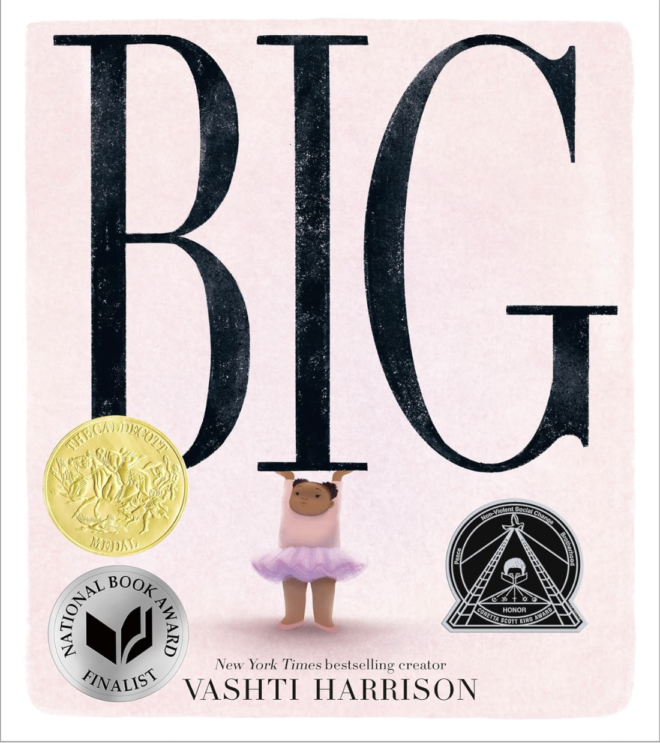When I saw that this year’s Caldecott winning book was Big by Vashti Harrison, my heart rose and fell simultaneously. I’m going to be honest, I had seen the book before the awards and personally loved it, however, I did not include it in my mock this year because I was intimidated. The art is beautiful and conversational opportunities abound from the images around the swing, to the words inked on the young girl’s body, to the quad page spread when she begins to reclaim her power. I struggled because I wasn’t sure of the “right” audience and if I, with my own complex feelings about body image, could facilitate the conversation the book deserved. This is a book whose word count and initial illustrative style reads very young and yet I had not discussed body image with students before adolescence. I was unsure whether or not older readers would be offended by my reading a “baby book”… third graders through fifth graders in particular have strong feelings in that regard… And yet, are my story rug littles, mature enough to respectfully look at the topic? My answer had been simply to not share the book with a class.
Ultimately, my hand was forced by a fourth grader. The school held a fundraiser in which a family paid a ridiculous amount of money for their daughter to be a “librarian for a day”. The young lady chose the day the medal winners would be announced to spend with me in the library. We streamed the awards together while perusing picture books. Duties of a librarian for a day included selecting read-alouds to be shared with classes who would be visiting the library during her time with me. Even before the Caldecott announcement, she had chosen Big as a great idea for third grade. I quietly cringed but I had made a promise and the YMAs further hardened her resolve.
I’m going to pause my recounting for just a moment and reflect. The interesting thing about co-creating the reading experience using visual thinking strategies is that the technique gives a focus for difficult conversations and absolves the facilitator of sole responsibility for the direction a classroom discussion takes. I knew what I got out of the book, I had hopes for what students would get out of the book, but there are no guarantees where a VTS discussion will go.
Back to the story. That first reading might not have been my best ever…. I had to ask a few more questions of my students to get them started. The girls in the class, usually hand raisers, were silent. The boys, not taking any book that features a pink tutu personally, answered questions about what they saw but without meaning or context… until it happened… whispered across the room… heard with my teacher ears, “GASP Mrs Rees is talking about fat shaming”. I stopped mid-sentence and turned to my commentator, “Yes I am. Would you please say that again to the whole class?” Not everyone was familiar with the term so we defined it together. I can’t say that the remainder of the book was our best class discussion ever but something changed. A taboo had been broken for that group of students and for me. We have talked about race, ethnicity, religious differences and disability. We had each expanded our understanding of diversity and inclusion in a significant way.
I touched base with their homeroom teacher later and she indicated that some discussion continued amongst those students after they left the library. The confidence gained from my first shared reading of Big encouraged me to read it to a second third grade class. The conversation became less awkward. That gave me the courage to read it to two fourth grade classes, who had robust but respectful discussions about whether or not body positivity and encouraging someone to become healthier were incompatible. Their insights and a little processing time on my part allowed me to facilitate shared reading experiences with second graders. I probably could bring the talk down to K-1 but there is still a part of me that feels like some of my littles are not entirely body aware yet and that this book could better be used as an intimate one on one or small group reading experience than with a room of 35 wiggly 6 year olds.

